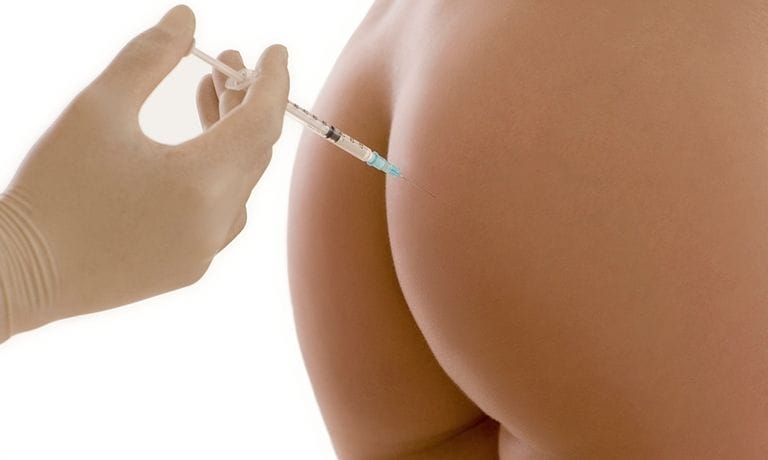
One of the swiftest rising beauty trends of late has been for subtle cosmetic procedures. Near-invisible to other people, these natural-looking ‘tweakments’ for both the face and body, are big business.
Playing a role in this is lipomodelling – more commonly known as fat transfer – which the experts say is now in high demand.
To explain it plainly, the technique takes fat from elsewhere in the body (usually the abdomen and thighs) via liposuction, which is then inserted into another area of the body to enhance its appearance. Best used for breast and buttock augmentation, it can also be used in facial procedures too.

Getty
The appeal
Professor Marcos Sforza, consultant plastic surgeon at MyAesthetics, tells Bazaarthat as “fat transfer doesn’t involve any artificial materials, many patients prefer the idea of using their own fat rather than a silicone implant or synthetic fillers”.
In the case of a natural looking breast augmentation (think an undetectable boob job, either by a modest size increase or a balancing of asymmetry), it is considered to have a more natural feel than silicone and saline solutions which are traditionally used to fill implants. Whether you get the very specific size or shape you’d like isn’t for certain, though, given that it’s difficult to predict exact sizes or measurements.
Professor Sforza does guarantee, however, that in keeping with its natural aesthetic, any scarring is minimal. “Only a very fine cannula is needed to perform the treatment” he says, “so the incisions are incredibly small and usually very well-hidden”.
Plus, given the avoidance of synthetic fillers, “patients are less likely to experience allergies, infections, or a high rejection rate,” he adds.
That’s not to say that fat transfer is for everyone (in the case of body procedures you’d need to be a size 10 or above, and healthy), or without risk. Ones that will definitely deter the squeamish.
Things to consider
While temporary bruising, swelling and numbness is to be expected wherever you have lipomodelling, something called fat necrosis can occur in the breast area. “This is a benign breast condition that consists of fatty tissue that has been bruised or injured and turns into a lump” Professor Sforza explains. “Fat necrosis does not lead to the development of breast cancer, but it may sometimes cause breast pain.”
As with any surgical procedure, early wound inspection is essential “to exclude post-op complications such as infection, necrosis and haematoma,” confirms Professor Sforza, who recommends that a three-month assessment should be made thereafter to plan further staged procedures if necessary.
After about six months, the fat cells that have been injected should be permanently established and last a lifetime – if a stable weight is well maintained.

Getty
The verdict
We predict a further rise in fat transfer’s popularity for 2018, with more development of its use for contouring the face and body, using it to shape the breasts, bottom or cheekbones in a three-dimensional manner. It won’t see the back of fillers or traditional cosmetic procedures, rather sit alongside them in the subtle surgery camp as the industry continues to grow (and grow).
As always, remember to only visit reputable clinics with highly trained, accomplished and respected aesthetic surgeons. Look for members of the British Association of Aesthetic Plastic Surgeons (BAAPS) and/or the British Association of Plastic, Reconstructive and Aesthetic Surgeons (BAPRAS).
From: Harper’s BAZAAR UK



